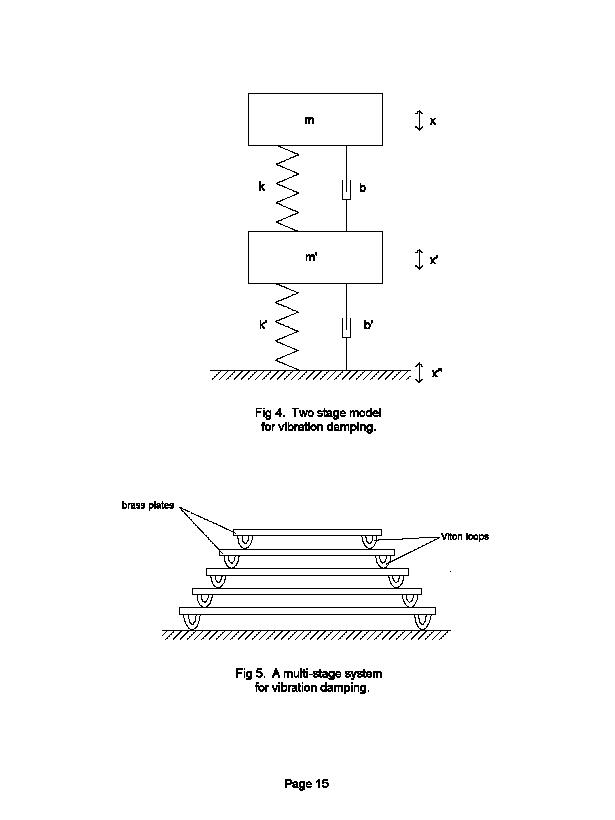DAMPING
Passive vibration damping systems typically use multiple stages cascaded together for better effect. Each stage can be a spring suspension system or a rubber buffered weight. Fig.4 shows the theoretical model used to calculate the response of a two stage system. The mathematical analysis will not be covered here. However it is worth mentioning that for a flat response over a wide range of frequencies the two stages are made from widely different masses and constants of elasticity, and, for optimum effect, the resonant frequency of both stages should be the same. The larger stage can be a 30Kg concrete slab suspended by four bungee cords tied to the ceiling. The smaller stage can be the tunneling unit itself suspended from light springs attached to a stand resting on the concrete slab. The bungee cords have their own intrinsic damping while the smaller unit can be damped using copper blocks within a magnetic field. The resonant frequency of each stage can be around 1Hz.
An alternative vibration isolation system is a pyramid consisting of a stack of brass plates and Viton separators (Fig.5). Unlike ordinary rubber, Viton has a strong damping effect and reacts like putty when hit with a hammer. Such a stack can be simply laid out on a large heavy table, provided the location is not too noisy.
